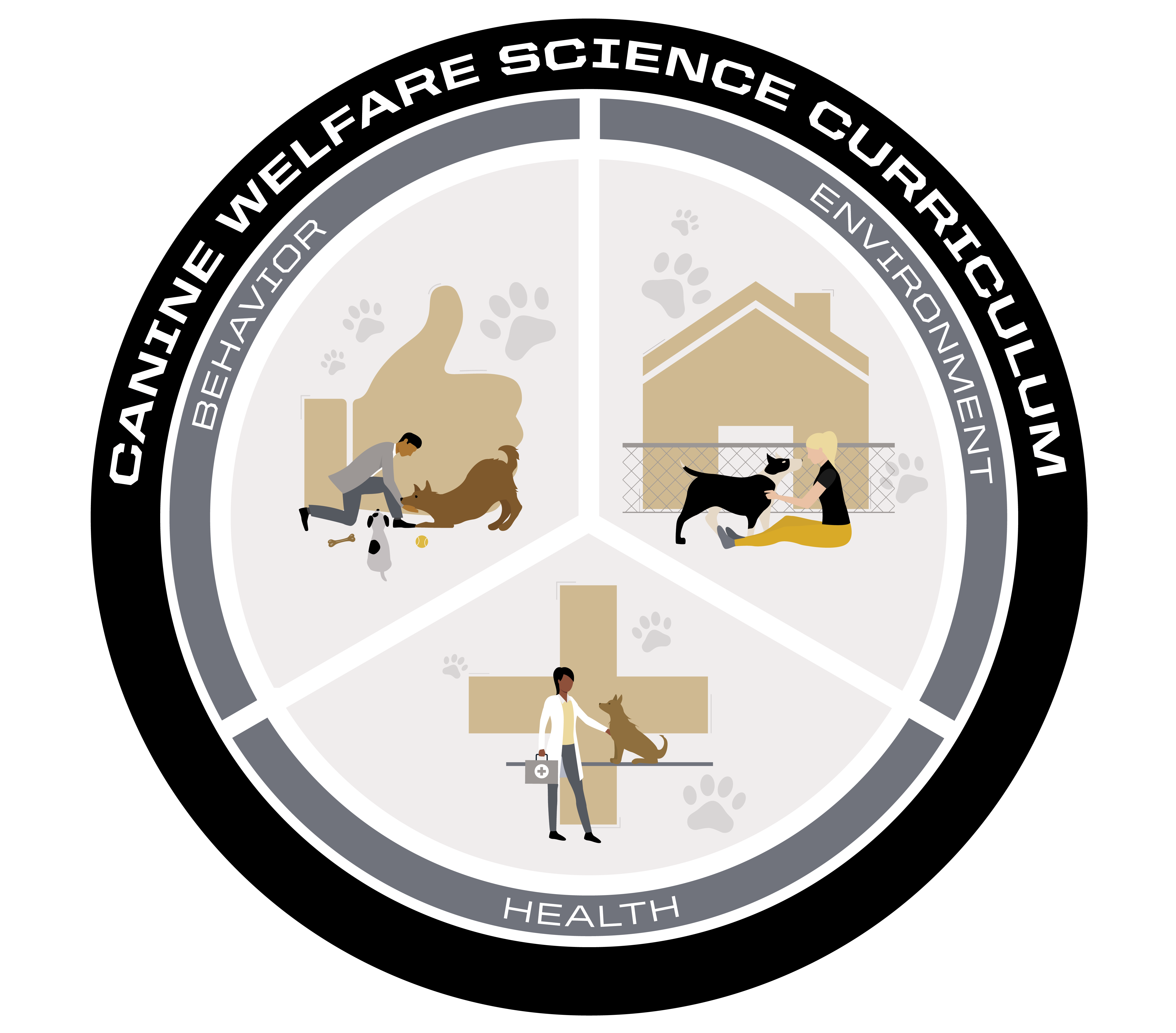Animal welfare
Dog Welfare Assessment
For good welfare, dogs should be able to function well, feel well, and express natural behaviors. Assessment of dog welfare should occur regularly to highlight changes over time and to allow for implementation of interventions as needed to improve welfare. Each dog will respond uniquely to their environmental conditions and their ability to cope can change quickly when presented with challenging conditions (e.g., excessive noise levels or lack of environmental control).
Comprehensive assessment of dog welfare requires evaluation of the physical and mental states of the individual. The Canine Welfare Science Curriculum found within the pages of this website presents this information in three main categories: behavior, environment, and health.
Animal Welfare Frameworks
Several frameworks have been proposed to guide animal welfare assessment, beginning with the Brambell committee’s “Five Freedoms” in 1965. This model has been used extensively in many animal species, including companion animals. The model focuses on absence of negative welfare and includes 1) Freedom from hunger and thirst, 2) Freedom from discomfort, 3) Freedom from pain, injury and disease, 4) Freedom to express normal behavior, and 5) Freedom from fear and distress.
The ‘Three Circles’ model (Fraser et al., 1997) involves overlapping circles where the overlap indicates that each concept can affect the others. For example, if an animal has an injury (circle 1: basic health and biological functioning), it can cause pain (circle 2: negative affective state) and prevent the animal from performing species-typical behaviors (circle 3: natural behavior).
More recent welfare assessment frameworks such as the Five Domains, have recognized the necessity of including positive welfare metrics in addition to freedom from negative states.
The Five Domains Model
The Five Domains Model for assessing animal welfare is a science-based approach that recognizes animals can experience feelings, ranging from negative to positive, and provides a framework to assess welfare across all species. The domains are graded based on both positive and negative states. The five domains are:
Comprehensive dog welfare assessment requires attention to physical health, behavioral health, and environmental management and design.

An animal can be said to be in a good state of welfare, based on scientific evidence, if it is healthy, comfortable, well-nourished, is able to express natural innate behaviors, and is not suffering from negative states such as pain, fear, or distress (Broom, 2007; Fraser et al., 1997).
Broom, D.M. (2007). Welfare in relation to feelings, stress and health. REDVET, 8, 1695-1704/
Fraser, D., Weary, D. M., Pajor, E. A., & Milligan, B. N. (1997). A scientific conception of animal welfare that reflects ethical concerns. Animal Welfare, 6(3), 187–205. Retrieved from https://www.wellbeingintlstudiesrepository.org/ethawel/1

Mellor, D.J. (2015). Positive animal welfare states and reference standards for welfare assessment. New Zealand Veterinary Journal, 63(1), 17–23. https://doi.org/10.1080/00480169.2014.926802


Fraser, D., Weary, D. M., Pajor, E. A., & Milligan, B. N. (1997). A scientific conception of animal welfare that reflects ethical concerns. Animal Welfare, 6(3), 187–205. Retrieved from https://www.wellbeingintlstudiesrepository.org/ethawel/1

Learners can use the Canine Welfare Science Curriculum graphic to quickly navigate between the three areas of the curriculum.
Click Behavior, Environment, or Health to go directly to the category’s resources in the library.
The Canine Welfare Science Resource Page provides educational resources that have been carefully curated to make the science of dog welfare accessible to all and to promote the best animal care and management practices.
The resources are organized into the three areas of our canine welfare science curriculum: behavior, health, and environment.
These curriculum areas are divided into topics, each with a library that includes several types of resources. They range from peer-reviewed scientific journal articles to checklists, website links, and videos.
The primary focus of each topic library is to meet the welfare needs of dogs living in breeding kennels, large or small scale. However, most of the information provided is relevant to all dog caretakers. After viewing the topic’s library, those seeking resources to support dogs in other living environments can also click on “Shelter & Rescue,” “Pet Families,” or “Research & Teaching” to access specially selected additional resources and specific examples tailored to the needs of dogs in these environments. Convenient and easy to use, the curriculum makes evidence-based information readily available for all.
0 Comments